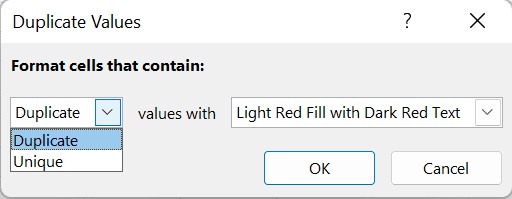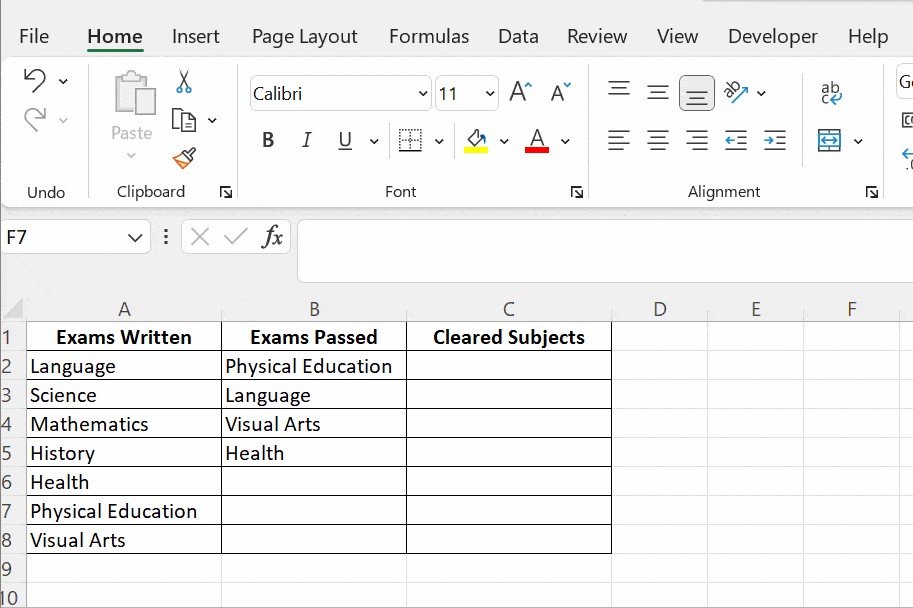In the realm of data analysis and spreadsheet management, Microsoft Excel stands as an indispensable tool. A common task for Excel users, from data analysts to business professionals, is comparing columns of data. Whether you’re working with customer lists, financial records, or inventory data, the ability to efficiently compare columns is crucial for identifying discrepancies, duplicates, or unique entries. While manual comparison might suffice for small datasets, it quickly becomes impractical and error-prone when dealing with larger spreadsheets.
This guide delves into the essential techniques for comparing columns in Excel, providing you with a step-by-step approach to streamline your workflow and enhance your data analysis capabilities. We will explore a range of methods, from simple formulas to conditional formatting and lookup functions, empowering you to efficiently compare columns and extract valuable insights from your data.
By mastering these techniques, you’ll be able to confidently tackle data comparison tasks, regardless of the size or complexity of your spreadsheets. Let’s embark on this journey to unlock the power of column comparison in Excel.
Why is Comparing Columns in Excel a Critical Skill?
Excel’s strength lies in its ability to organize, manipulate, and analyze data. In many scenarios, comparing columns is fundamental to data integrity and informed decision-making. Consider these common situations:
- Data Validation: Ensuring data consistency across different sources or time periods. For instance, comparing a current customer list against a previous one to identify new customers or churn.
- Duplicate Detection: Identifying and removing duplicate entries within a dataset, such as duplicate product IDs or email addresses.
- Finding Missing Information: Determining which data points are present in one column but absent in another, useful for inventory management or tracking project tasks.
- Reconciliation: Matching records between two datasets, such as comparing sales data with order fulfillment records to identify discrepancies.
- Identifying Unique Entries: Isolating values that appear in only one of the columns being compared, helpful for finding unique customer segments or product variations.
Manually performing these comparisons in large datasets is not only time-consuming but also highly susceptible to human error. Excel provides a suite of tools and functions to automate and simplify this process, making it efficient and accurate.
Effective Methods to Compare Two Columns in Excel
Excel offers several methods to compare columns, each suited for different scenarios and user preferences. Here, we’ll explore the most effective techniques:
1. Row-by-Row Comparison Using the Equals Operator (=)
The simplest approach for a direct, row-by-row comparison is using the equals operator. This method is straightforward and quickly highlights whether corresponding cells in two columns contain identical values.
How to do it:
- Select an empty column adjacent to the columns you want to compare. For example, if your data is in columns A and B, you can use column C.
- In the first cell of the empty column (e.g., C2 if your data starts in row 2), enter the formula:
=A2=B2 - Press Enter. The cell will display
TRUEif the values in cells A2 and B2 are identical, andFALSEif they are different. - Drag the fill handle (the small square at the bottom right of the selected cell) down to apply the formula to the rest of the rows you want to compare.
Example:
| Column A (Data 1) | Column B (Data 2) | Column C (Comparison Result) |
|---|---|---|
| Apple | Apple | TRUE |
| Banana | Orange | FALSE |
| Cherry | Cherry | TRUE |
| Date | Fig | FALSE |


This method provides a quick visual indication of matches and mismatches using TRUE and FALSE values.
2. Using the IF Condition to Display “Match” or “Mismatch”
While TRUE and FALSE are functional, you might prefer more descriptive labels like “Match” and “Mismatch”. The IF function in Excel allows you to achieve this.
How to do it:
- In the first cell of the empty column, enter the formula:
=IF(A2=B2,"Match","Mismatch") - Press Enter and drag the fill handle down as before.
Formula Breakdown:
=IF(condition, value_if_true, value_if_false): This is the general syntax of theIFfunction.A2=B2: This is the condition we are testing – whether the values in cell A2 and B2 are equal."Match": This is the value displayed if the condition isTRUE."Mismatch": This is the value displayed if the condition isFALSE.
Example:
| Column A (Data 1) | Column B (Data 2) | Column C (Comparison Result) |
|---|---|---|
| Apple | Apple | Match |
| Banana | Orange | Mismatch |
| Cherry | Cherry | Match |
| Date | Fig | Mismatch |
Comparing for Differences (Mismatch):
To specifically highlight differences, you can modify the IF formula to show “Mismatch” when values are not equal:
=IF(A2<>B2,"Mismatch","Match")
Here, <> is the “not equal to” operator.
3. Case-Sensitive Comparison with the EXACT Function
By default, Excel comparisons are case-insensitive. “Apple” is considered the same as “apple”. If you need a case-sensitive comparison, the EXACT function is your solution.
How to do it:
- In the comparison column, use the formula:
=IF(EXACT(A2,B2),"Match","Mismatch")
Formula Breakdown:
=EXACT(text1, text2): This function compares two text strings and returnsTRUEif they are exactly the same, including case, andFALSEotherwise.
Example:
| Column A (Data 1) | Column B (Data 2) | Column C (Comparison Result – Case Sensitive) |
|---|---|---|
| Apple | Apple | Match |
| apple | Apple | Mismatch |
| Cherry | cherry | Mismatch |
| DATE | DATE | Match |
The EXACT function ensures that only values with identical characters and case are considered a “Match”.
4. Highlighting Matches and Differences with Conditional Formatting
Conditional formatting provides a visual way to highlight matching or unique values directly within your columns, without needing an extra comparison column.
Highlighting Duplicate (Matching) Values:
- Select both columns you want to compare (e.g., columns A and B).
- Go to the Home tab on the Excel ribbon.
- Click on Conditional Formatting in the Styles group.
- Select Highlight Cells Rules and then Duplicate Values…
- In the “Duplicate Values” dialog box:
- Ensure “Duplicate” is selected in the dropdown.
- Choose your desired formatting style (e.g., fill color, text color) from the “with” dropdown.
- Click OK.
Excel will highlight all values that are present in both selected columns according to your chosen format.
Highlighting Unique (Different) Values:
To highlight values that are unique to each column (i.e., different values), follow the same steps as above, but in the “Duplicate Values” dialog box:
- Select “Unique” from the dropdown instead of “Duplicate”.
- Choose your formatting style and click OK.
Excel will now highlight values that appear only in one of the selected columns.
Clearing Conditional Formatting:
To remove conditional formatting, select the formatted cells, go to Conditional Formatting → Clear Rules → Clear Rules from Selected Cells.
5. Leveraging Lookup Functions (VLOOKUP) for Advanced Comparison
Lookup functions, particularly VLOOKUP, offer a more sophisticated way to compare columns, especially when you need to check if values from one column exist in another and potentially retrieve related information.
Using VLOOKUP to Find Matches and Mismatches:
Let’s say you have two columns: Column A (List 1) and Column B (List 2). You want to know which items in List 1 are also present in List 2.
- In an empty column (e.g., Column C), enter the following formula in the first cell (e.g., C2):
=VLOOKUP(A2,$B$2:$B$5,1,FALSE)(Adjust$B$2:$B$5to cover the range of your List 2 data). - Press Enter and drag the fill handle down.
Formula Breakdown:
=VLOOKUP(lookup_value, table_array, col_index_num, [range_lookup])is the syntax forVLOOKUP.A2: This is thelookup_value– the value from Column A that we want to find in Column B.$B$2:$B$5: This is thetable_array– the range of cells in Column B (List 2) where we are searching for thelookup_value. The$symbols create absolute references, ensuring the range stays fixed when you drag the formula down.1: This is thecol_index_num. Since we are only concerned with whether the value is found in Column B, and Column B is the first (and only) column in ourtable_array, we use1.FALSE: This is therange_lookupargument.FALSE(or 0) specifies that we want an exact match.
Interpreting the Results:
- If
VLOOKUPfinds a match, it will return the matching value from Column B. - If
VLOOKUPdoes not find a match, it will return#N/A.
Identifying Mismatches using ISNA and IF:
To display a more user-friendly “Mismatch” for #N/A results and “Match” for found values, you can combine VLOOKUP with ISNA and IF:
=IF(ISNA(VLOOKUP(A2,$B$2:$B$5,1,FALSE)),"Mismatch","Match")
Formula Breakdown:
=ISNA(value): This function returnsTRUEifvalueis#N/A, andFALSEotherwise.- The
IFfunction now checks ifISNA(VLOOKUP(...))isTRUE(meaning#N/Awas returned byVLOOKUP). If so, it displays “Mismatch”; otherwise, it displays “Match”.
Frequently Asked Questions about Comparing Columns in Excel
1. Beyond Row Differences, what other “Go To Special” options are useful for column comparison?
While “Row Differences” (mentioned in the original article’s FAQ) can highlight cell-level differences, “Go To Special” offers other options that are not directly for column comparison but can be helpful in data analysis related to columns. For comparing entire rows across columns, the methods described in this article are more direct.
2. Are there methods to compare more than two columns at once?
Yes, you can extend the IF and EXACT formulas to compare multiple columns. For example, to check if values in columns A, B, and C are all the same in a given row:
=IF(AND(A2=B2, B2=C2),"Full Match","")
This uses the AND function to ensure all conditions (A2=B2 and B2=C2) are true for a “Full Match”.
To check if any two columns in a set of three match in a row:
=IF(OR(A2=B2, B2=C2, A2=C2),"Match","")
This uses the OR function to check if at least one of the conditions is true.
Conditional formatting can also be applied to multiple columns to highlight duplicates or uniques across the entire selected range.
3. Can I use INDEX-MATCH instead of VLOOKUP for column comparison?
Yes, INDEX-MATCH is a more flexible and often preferred alternative to VLOOKUP. For column comparison, INDEX-MATCH can be used similarly to VLOOKUP. For instance, the VLOOKUP formula:
=VLOOKUP(A2,$B$2:$B$5,1,FALSE)
can be replaced with INDEX-MATCH:
=INDEX($B$2:$B$5,MATCH(A2,$B$2:$B$5,0))
In this case, MATCH(A2,$B$2:$B$5,0) finds the row number where A2 is found in the range $B$2:$B$5, and INDEX($B$2:$B$5, ...) returns the value from that row in the range $B$2:$B$5. While slightly more complex in syntax, INDEX-MATCH is more powerful in other scenarios, especially when the lookup column is not the first column in the lookup range.
Conclusion: Empowering Your Data Analysis with Column Comparison in Excel
Comparing columns in Excel is a fundamental skill for anyone working with data. This guide has equipped you with a range of techniques, from basic operators and IF conditions to advanced conditional formatting and lookup functions like VLOOKUP. By mastering these methods, you can efficiently identify matches, mismatches, duplicates, and unique values within your spreadsheets.
Whether you’re validating data, cleaning datasets, or extracting insights, the ability to effectively compare columns in Excel will significantly enhance your data analysis productivity and accuracy. Experiment with these techniques and choose the methods that best suit your specific needs and data analysis workflows. Continue to explore the vast capabilities of Excel to further refine your data handling skills and unlock deeper insights from your data.